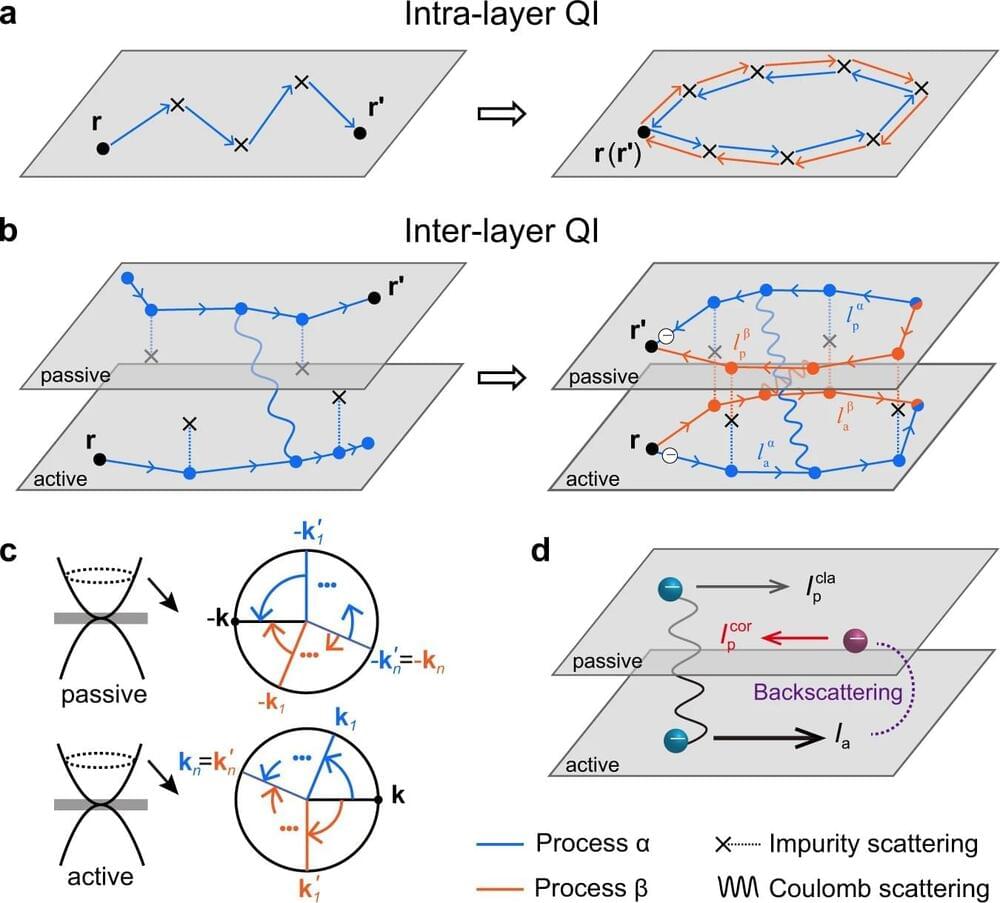A team led by Prof. Zeng Changgan and Associate Researcher Li Lin from the University of Science and Technology (USTC) / Chinese Academy of Sciences (CAS) Key Laboratory of Strongly-Coupled Quantum Matter Physics, collaborating with Prof. Feng Ji’s team from Peking University, revealed significant quantum interference effect in inter-layer transport process for the first time using graphene-based electronic double-layer systems. Their work was published in Nature Communications.
Coulomb drag is an effect that occurs between two conductive layers in proximity but insulated from each other, wherein moving carriers in one layer (active layer) induces the transport of carriers in the other layer (passive layer), thereby generating an open-circuit voltage in the passive layer.
Coulomb drag has been widely applied in previous studies of long-range interactions between carriers, such as the Bose-Einstein condensation of indirect excitons. However, there is a lack of research on the external field response and possible quantum effects of the Coulomb drag.
